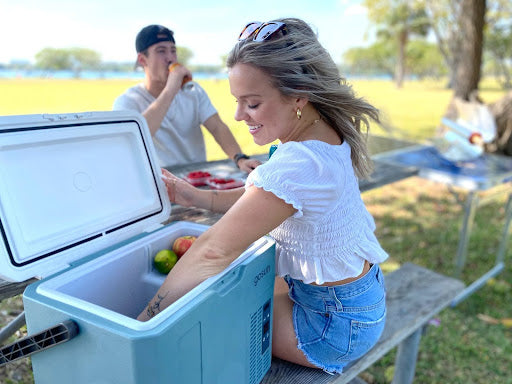When it comes to outdoor adventures, picnics, or tailgating, having a reliable cooler is essential. But as the temperatures soar, many enthusiasts wonder, “Can you put ice in an electric cooler?” This question may seem straightforward, yet the answer can be quite nuanced depending on various factors including the type of electric cooler in use, its design, capacity, and intended use. Let’s delve deeper into the world of electric coolers and the role ice plays in their functionality.
To begin with, understanding the operation of electric coolers is crucial. Unlike traditional coolers that rely solely on ice and insulation to maintain a low temperature, electric coolers use a different mechanism. They typically employ a refrigeration system powered by a battery or a vehicle’s power source. Some models offer the dual capability of chilling and heating, providing versatility for various scenarios.
So, can ice be introduced into these electric wonder boxes? The answer is yes, with some caveats. Ice can enhance cooling performance if you’re looking to maintain a lower temperature for an extended period. However, not all electric coolers are designed to handle ice, primarily due to the potential for water accumulation and subsequent equipment damage.
The most common type of electric cooler is the thermoelectric cooler. These devices use a process called the Peltier effect to remove heat from within the cooler. While they are lightweight and portable, adding ice is generally discouraged. This is due to the risk of water seeping into the cooler and damaging the electrical components. If you do choose to use ice with a thermoelectric cooler, consider using ice packs or gel packs instead. These alternatives won’t create excess water and can offer similar cooling benefits.
On the other hand, compressor-based electric coolers operate much like household refrigerators. They come with more robust insulation and can maintain consistently low temperatures regardless of the amount of ice inside. For these coolers, adding ice may actually prove advantageous. It can help to improve the interior temperature while reducing the load on the compressor, which in turn can extend the life of the cooler and improve efficiency. This is particularly useful during exceptionally hot days when the cooler is used frequently.
For those keen on indulging in icy beverages or chilled foods, the blending of ice with your electric cooler can be both beneficial and practical. Compressive coolers can sustain lower temperatures, allowing you to store perishables safely while also being able to savor refreshing drinks. However, monitoring the ice level is important, as large amounts can lead to significant water formation that must be managed.
Another critical aspect to consider is the capacity of the electric cooler. Smaller coolers may become overwhelmed when ice is added, especially if space is limited. If you’re planning to use your electric cooler for camping trips or long road journeys, strategically using ice packs may prove more efficient. Ice packs, while they have a shorter cooling duration than traditional ice, are often designed to fit snugly within the shape of the cooler, providing maximum surface area contact and thus optimizing the cooling effect.
Furthermore, if your electric cooler has been designed with drain plugs, this feature can further ease the management of melted ice. A drain plug permits the easy removal of excess water without the need to tilt or turn the cooler, facilitating a maintenance-free approach that is especially handy during picnics or group gatherings.
It’s also worth mentioning the energy considerations. Electric coolers that rely heavily on ice tend to consume more power; the introduction of ice may demand additional work from the cooling mechanism. This could be relevant when determining how long you should run your cooler off a car battery, for example. Being mindful of how much ice you use and its impact on energy consumption is prudent when planning your outings.
Ultimately, how you choose to use ice in your electric cooler will depend on your specific needs and the cooler’s capabilities. It’s advisable to consult the manufacturer’s guidelines for your particular model; some may recommend best practices or caution against ice use altogether.
In conclusion, while the question of whether to put ice in an electric cooler can lead to varied responses, the preferred strategy involves an understanding of the cooler type. Compressor-based models welcome the icy addition while thermoelectric types recommend caution. As with any piece of outdoor equipment, knowing the ins and outs allows for optimal performance, whether you’re cooling down drinks or preserving food on the go. Enjoy summer outings with the peace of mind that comes from a well-informed cooler strategy, reducing the chances of spoilage and maximizing refreshment.
